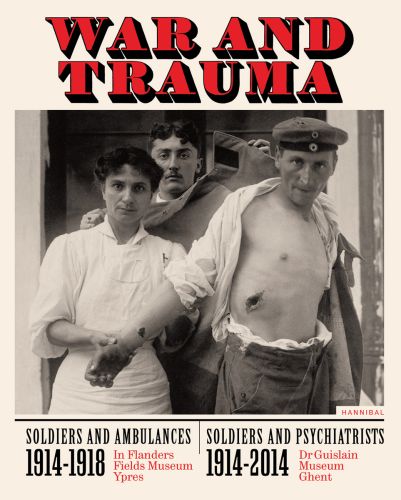
War and Trauma
Soldiers and Ambulances 1914-1918 / Soldiers and Psychiatrists 1914-2014
- This book contains a wealth of exclusive images and short, accessible essays on this gripping subject
- Book accompanying the double exhibition of the same name at the In Flanders Fields Museum in Ypres, Belgium and the Dr. Guislain Museum in Ghent, Belgium from 1st November, 2013 to 30th June, 2014
At the beginning of the war, not a single European army was prepared in any sense, to deal with the large numbers of victims in an humanitarian way. The firepower of the armies was increased, the defence reinforced, but victim care continued to lag seriously behind. Philanthropy, private initiative and the courageous efforts of many individuals had to make up for the failing medical care during the war. As the war progressed, medical care also developed and organisation and relief improved. The greatest breakthrough was, however, the recognition – albeit reluctantly – of mental trauma caused by the war. During World War I, many soldiers fell victim to bizarre, anxious and disturbed behaviour, which was sometimes referred to as “shell shock”. The army commanders seemed reluctant to recognise a formal diagnosis, questioning whether men were really traumatised or simply cowards who were trying to stay away from the horrific and terrifying reality of the Front. Whereas in the early 20th century, the focus was mainly on the shock itself and the outward physical symptoms, today there is a far more in-depth exploration of the complex nature of the human reaction to extreme stress as a result of traumatic events, like war. There is a recognition of a deep, life-affecting condition termed as Post-traumatic Stress Disorder. This book is an emotive study of the suffering of war, which can be overwhelming. Offering both analysis and reflection, this intensely moving book looks at the way in which psychiatrists, reporters, artists and war photographers currently perceive and treat the psychological suffering, the often invisible legacy of those involved in war and human conflict.
- Publisher
- Hannibal Books
- ISBN
- 9789491376634
- Published
- 27th Nov 2013
- Binding
- Paperback / softback
- Territory
- World excluding Benelux, France, Germany, Austria, Switzerland, Portugal, Spain, and Italy
- Size
- 260 mm x 210 mm
- Pages
- 192 Pages
- Illustrations
- 80 color, 120 b&w
Distributed by ACC Art Books
Our Catalogues
Please log-in or create an account to see your recent items.